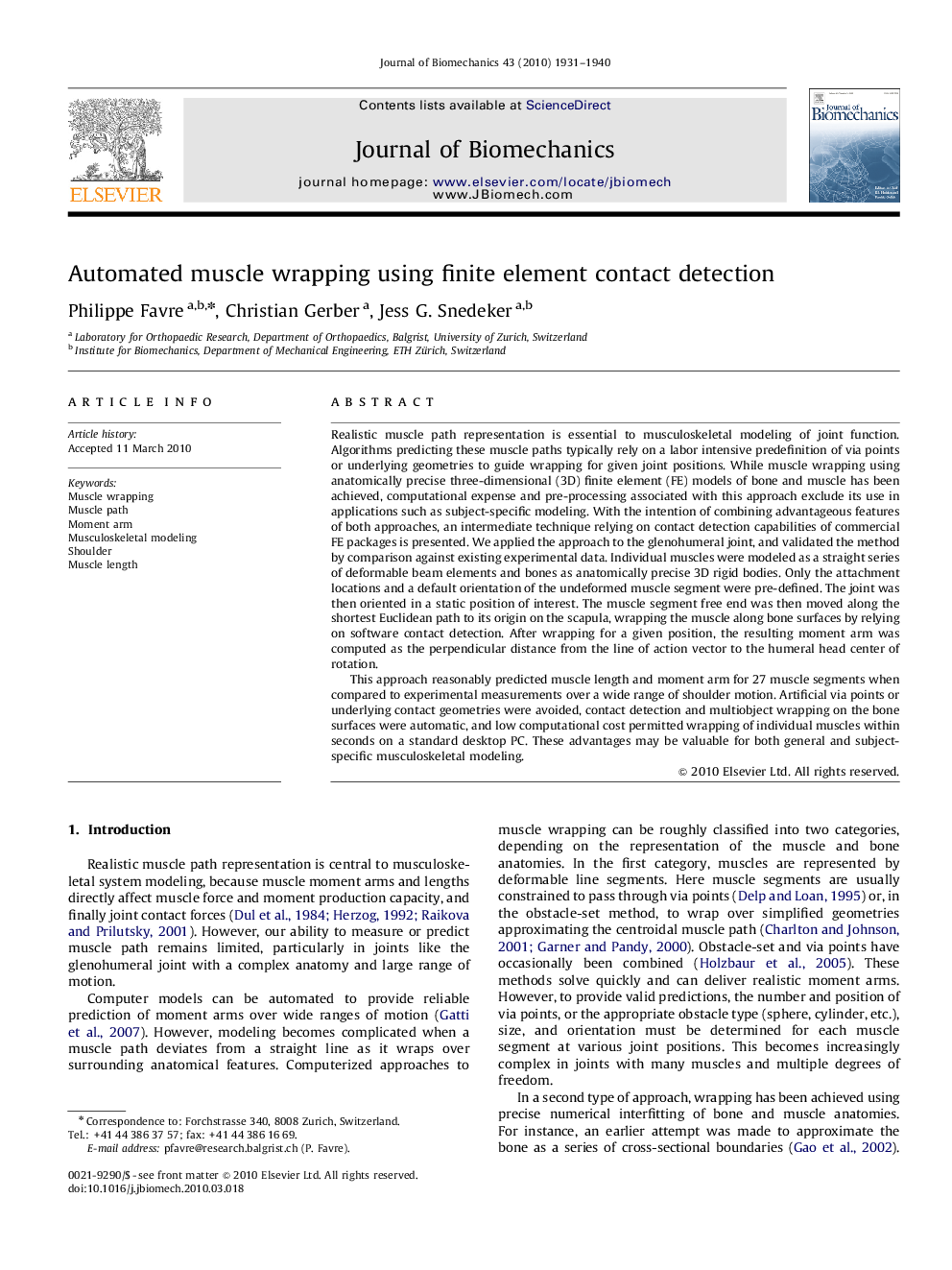| Article ID | Journal | Published Year | Pages | File Type |
|---|---|---|---|---|
| 873326 | Journal of Biomechanics | 2010 | 10 Pages |
Realistic muscle path representation is essential to musculoskeletal modeling of joint function. Algorithms predicting these muscle paths typically rely on a labor intensive predefinition of via points or underlying geometries to guide wrapping for given joint positions. While muscle wrapping using anatomically precise three-dimensional (3D) finite element (FE) models of bone and muscle has been achieved, computational expense and pre-processing associated with this approach exclude its use in applications such as subject-specific modeling. With the intention of combining advantageous features of both approaches, an intermediate technique relying on contact detection capabilities of commercial FE packages is presented. We applied the approach to the glenohumeral joint, and validated the method by comparison against existing experimental data. Individual muscles were modeled as a straight series of deformable beam elements and bones as anatomically precise 3D rigid bodies. Only the attachment locations and a default orientation of the undeformed muscle segment were pre-defined. The joint was then oriented in a static position of interest. The muscle segment free end was then moved along the shortest Euclidean path to its origin on the scapula, wrapping the muscle along bone surfaces by relying on software contact detection. After wrapping for a given position, the resulting moment arm was computed as the perpendicular distance from the line of action vector to the humeral head center of rotation.This approach reasonably predicted muscle length and moment arm for 27 muscle segments when compared to experimental measurements over a wide range of shoulder motion. Artificial via points or underlying contact geometries were avoided, contact detection and multiobject wrapping on the bone surfaces were automatic, and low computational cost permitted wrapping of individual muscles within seconds on a standard desktop PC. These advantages may be valuable for both general and subject-specific musculoskeletal modeling.
